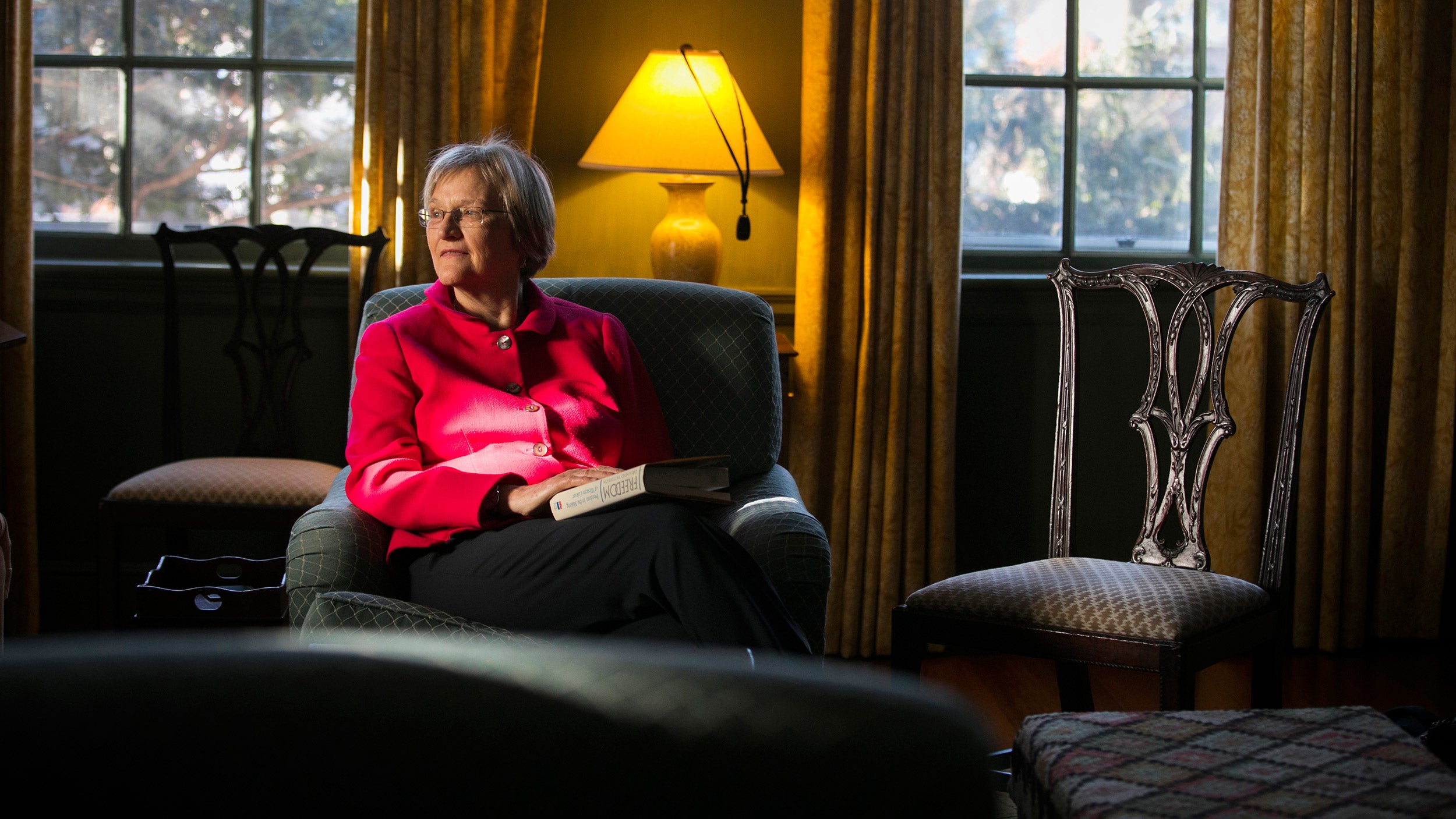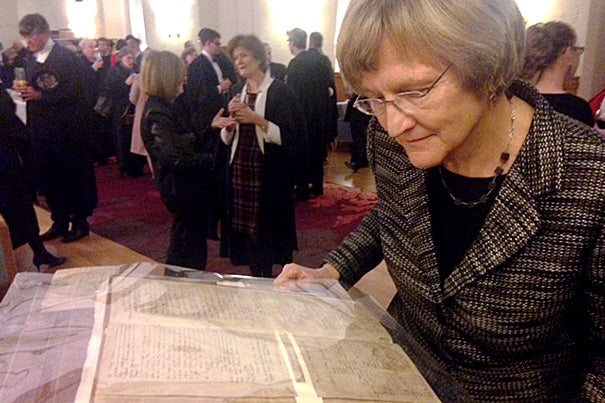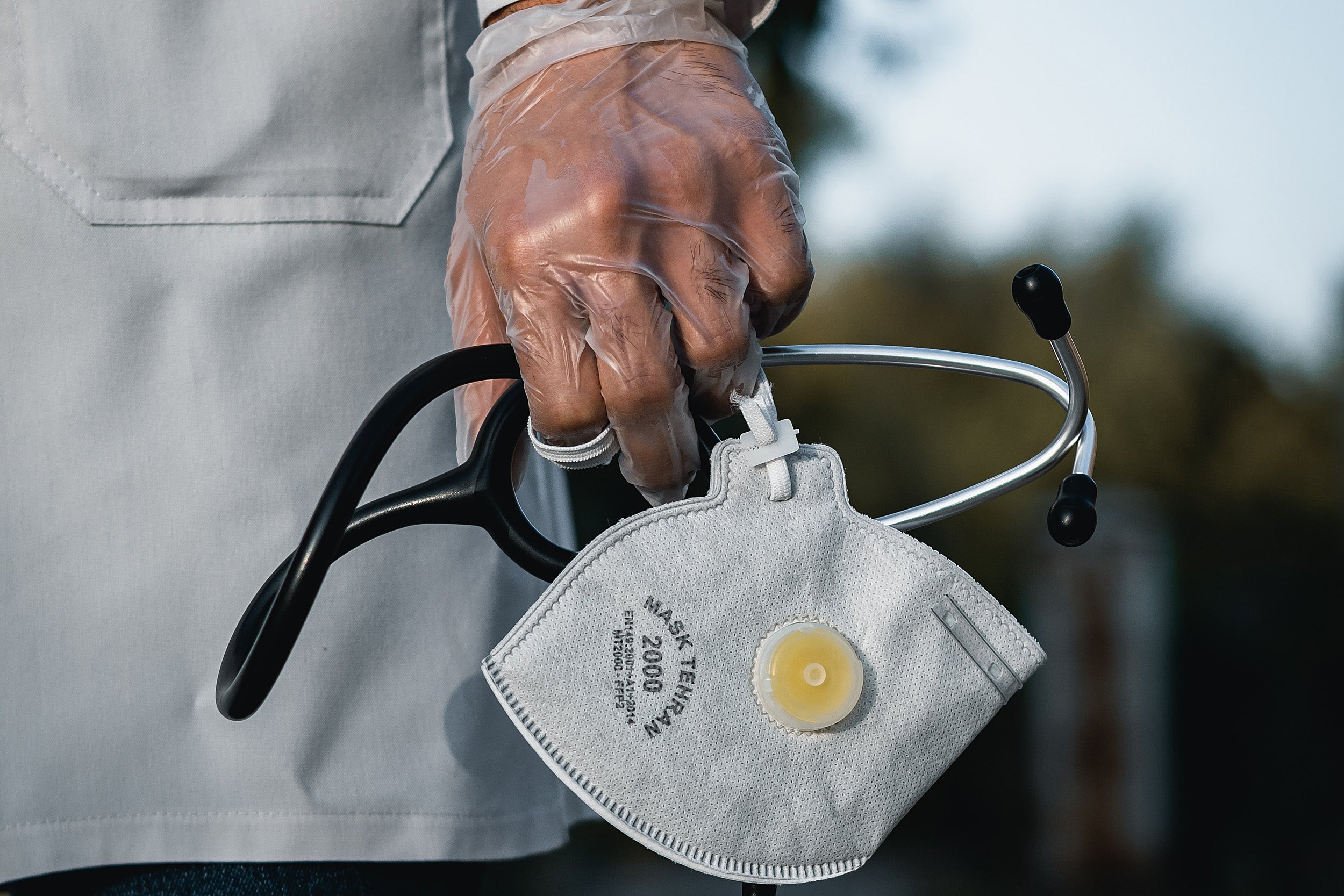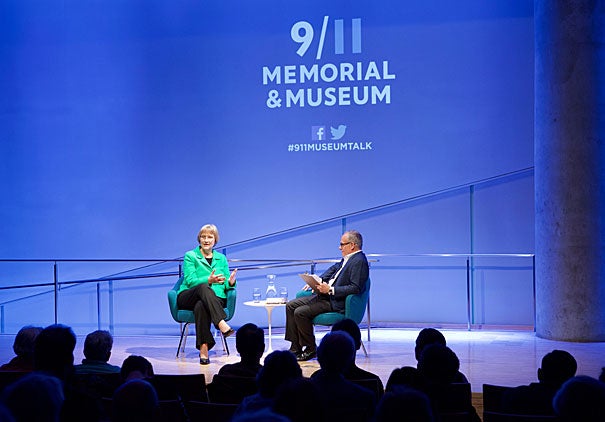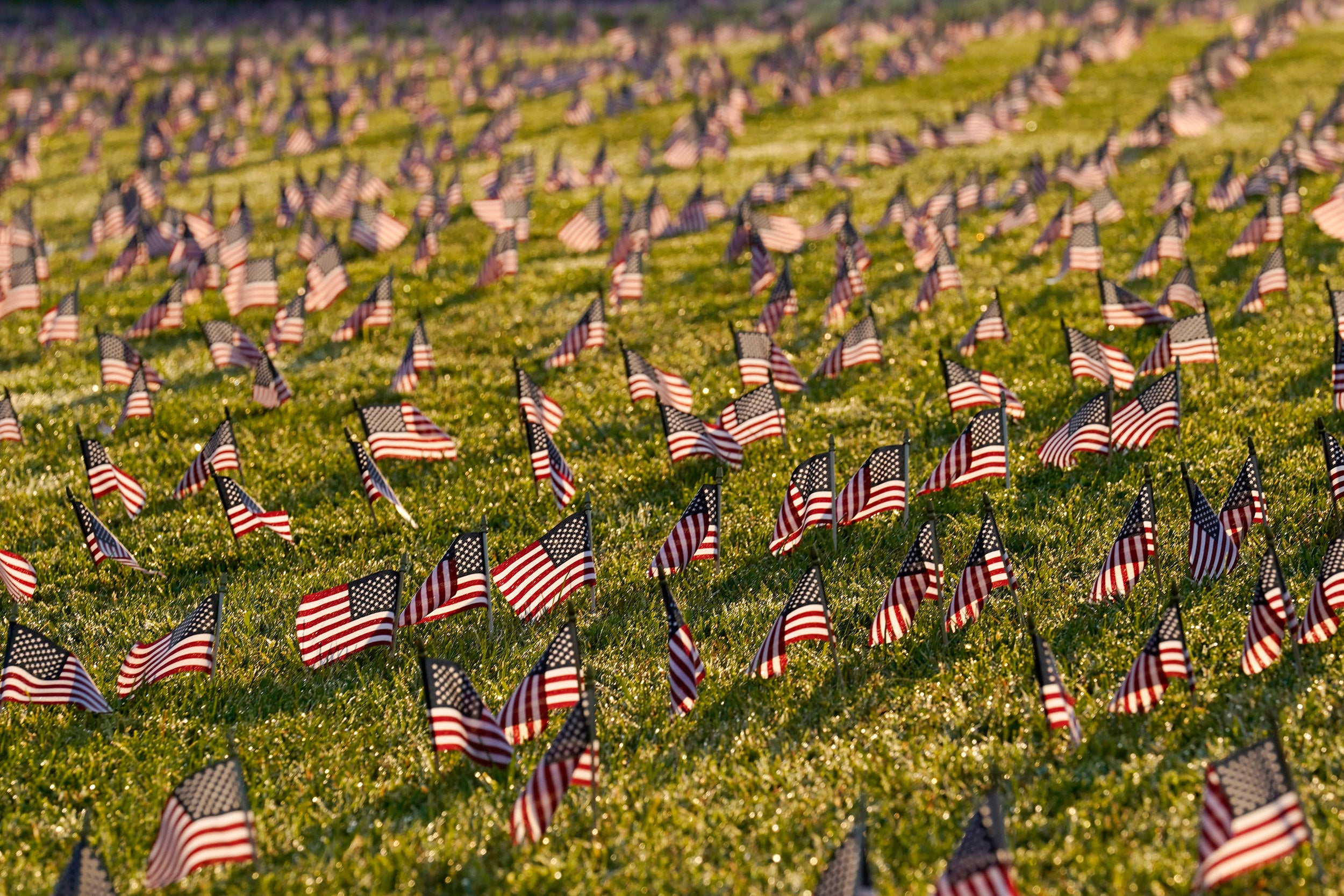
Activists from the COVID Memorial Project marked the deaths of 200,000 lives lost in the U.S. to COVID-19 by placing thousands of small American flags on the grounds of the National Mall in Washington.
AP Photo/J. Scott Applewhite
Marking the passing of a grim pandemic milestone for the nation
How to mourn, find meaning in the deaths of 200,000, with more certain to come
Less than a year after the first case was confirmed in the United States, the nation recently passed 200,000 deaths from the novel coronavirus, a relatively large share of the current global toll of just over a million. The Gazette asked Harvard scholars to reflect on that tragic national milestone.
Drew Faust
Harvard president emerita, Arthur Kingsley Porter University Professor, and author of “This Republic of Suffering: Death and the American Civil War,” which examines how the nation came to terms with the conflict’s unprecedented death toll
How does a society grapple with such loss? Two hundred thousand dead is not just an absence; it is a presence — the continuing reality of the hole, of the rent in the fabric of family and society, which these deaths leave behind. We struggle to find the meaning of such loss, and we seek a community of shared mourning, an acknowledgement that we are not alone in our grief. The purpose of Lincoln’s Gettysburg Address — which came, we should remember, at about the midpoint of the Civil War’s more than 700,000 deaths — was to unite the country in acknowledging and giving meaning to those men’s lives, in defining their deaths as a continuing force in shaping the identity of the nation for which they had died. We would not forget them; they would not have died in vain; the war and its casualties would yield a “new birth of freedom.” We have heard no such consolation or explanation relative to our COVID loss. We lack both rituals and monuments to process our grief, and we improvise to name and honor those who have died. Mourning is a process that enables the bereaved to work through loss and adjust to their changed lives. In this pandemic, the mourning process has been arrested, inhibited, distorted in ways that will leave us as individuals and as a nation with unresolved grief that will shape us for years to come.
Anita Chary
Member of the Brigham and Women’s/Massachusetts General Hospital Harvard-Affiliated Emergency Medicine Residency program
Our nation has faced tremendous loss, and we continue to grapple with daily ongoing tragedies. As we stand together in shared grief, we must acknowledge the marginalized communities that have been disproportionately burdened with COVID-19. The pandemic has exposed longstanding inequalities that make racial minorities and economically disadvantaged groups more vulnerable to COVID and numerous other diseases. Frontline workers in service industries, homeless individuals, those who primarily speak languages besides English — these are the people who need our attention as we work to prevent more deaths from COVID. Our nation’s politicians, public health officials, and health care providers must connect vulnerable communities with health resources, ensure that they have information about COVID in their native languages, and work against racism in health care and society at large. These are only first steps. As the pandemic continues, the work we do to save lives and prevent more from dying now will improve health in our nation in the long term.
Evelynn Hammonds
Chair of Harvard’s Department of the History of Science, Barbara Gutmann Rosenkrantz Professor of the History of Science, and professor of African and African American studies
I can still remember standing on the Mall in Washington, D.C., in 1987 in the early morning as the AIDS Memorial Quilt was being unfurled. It was a moving and poignant representation of the many thousands of lives that had been lost to HIV/AIDS. It was a solemn moment, very quiet, and I was overcome by the enormity of what the virus had taken from us. By one source the quilt is the largest piece of community folk art in the world as of 2020. As the U.S. approached 200,000 deaths from the pandemic of COVID-19 I kept asking, where are the memorials? Where can we gather to honor those who have died? Where can we talk about the ways these lost lives shaped ours? Daily I watch scenes of gatherings on streets and restaurants with masked and unmasked people dining outside and going about their daily business. I watch news shows that end with short vignettes of the lives of people who have died and what these individuals meant to their families and communities. But I have not experienced a sense of loss on a grand scale that the number 200,000 deaths marks. I have not seen daily scenes of funerals or other ceremonies marking these deaths. Yet the death count grows daily. And of course, what has been loss is not just these specific individual deaths; it is also the bonds between all those who were connected to those who have died — their families, friends, and communities and those who nursed them, held their hands, delivered sad news to their families and those who have performed last rites. Our world has been irrevocably changed since January, and we here in the U.S. have yet to find a way to make this change visible, to deal with the loss, to grieve and to mourn. Perhaps we will find a way to make new rituals to mark this time. We need new rituals and new forms of community, not on screens but in public spaces where we can stand together in recognition that a virus respects no boundaries of race, gender, class, or any other category we use to distance ourselves from our common humanity. Two hundred thousand deaths and counting.
Stephanie Paulsell
Interim Pusey Minister in the Memorial Church, Susan Shallcross Swartz Professor of the Practice of Christian Studies at Harvard Divinity School, Faculty Dean, Eliot House
Two hundred thousand is a number so large that it can induce a kind of numbness. Resisting that numbness is a national responsibility. Although these deaths have gone largely unmourned on the national level, some institutions have risen to it. The New York Times printed the names of the first 100,000 people to die of the coronavirus on its front page a few months ago, and there are people in our community still reading a portion of those names aloud each day, to honor the terrible loss each death represents. Recently, the National Cathedral in Washington, D.C., tolled its bell 200 times, once for every thousand deaths. Abhishek Raman, a proctor in the Yard who participated in the event, says that listening to that solemn sound for a full half-hour, even virtually, helped him feel the reality of those deaths in his body.
We need more large-scale rituals like these, to help us feel these deaths in our bodies, to render that incalculable 200,000 as 200,000 lives lived. We also need intimate rituals where stories of those who have died can be shared. This is the time of year when visitors would ordinarily gather at the Day of the Dead altars in the Peabody Museum. Adorned with photographs, flowers, and food, those altars provide a place, as I’ve learned from Professor Davíd Carrasco, to spend time with the dead and with each other. We need these gathering places. It’s hard not to be able to enter our sacred spaces or to crowd into each other’s homes, sharing food and hugs, when someone dies. Crowding onto each other’s screens is not the same — but in the sharing of memories, even those flat screens become something more.
For all of us, these deaths pose a question: not just “who were they?” but “who are we?” Longstanding inequities and structures of oppression have caused a disproportionate burden of illness and death to be borne by communities of color in this pandemic. Knowing this, who will we become — as individuals and as a nation?
Bruce Walker
Phillip T. and Susan M. Ragon Professor of Medicine, founding director of the Ragon Institute of MGH, MIT, and Harvard, and director of the Harvard University Center for AIDS Research
Bringing meaning to the terrible losses suffered through COVID-19 will come from using this pandemic as a wake-up call and creating a robust system to effectively curtail the next pandemic — which may be even more lethal. Viruses are clearly an existential threat to humanity, and we must respond accordingly. Imagine a virus with the transmissibility of SARS-CoV-2 (high) but with a high case fatality rate mirroring SARS-CoV-1 (11 percent) or MERS (34 percent). There is every reason to believe this is possible. We need to respond with a global effort establishing an effective surveillance system — and we need to do this with utmost urgency.



